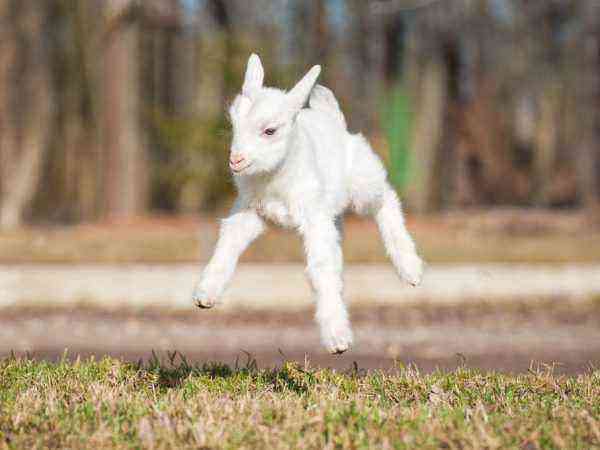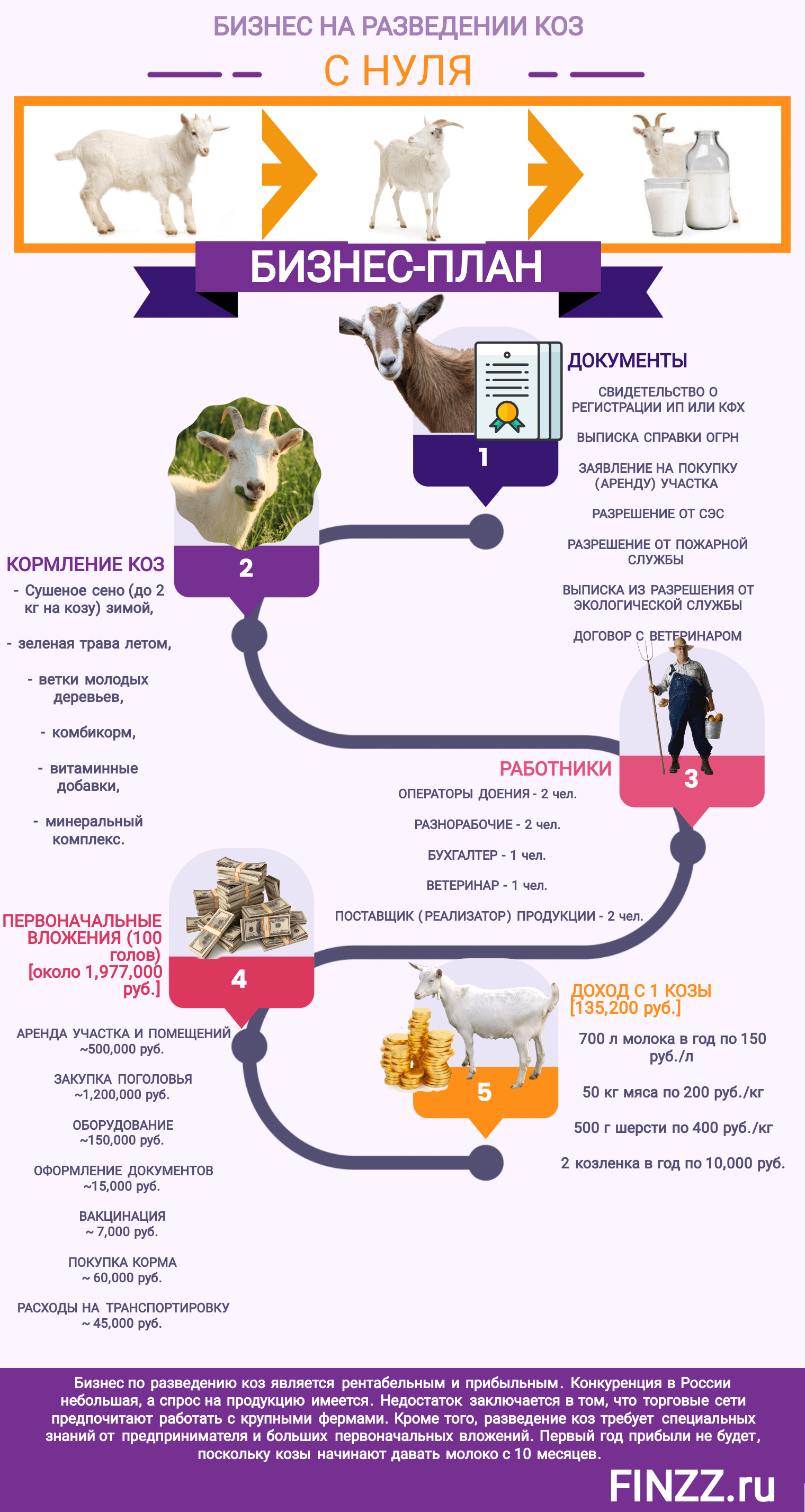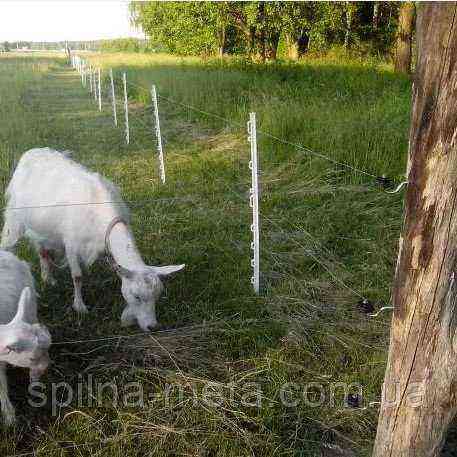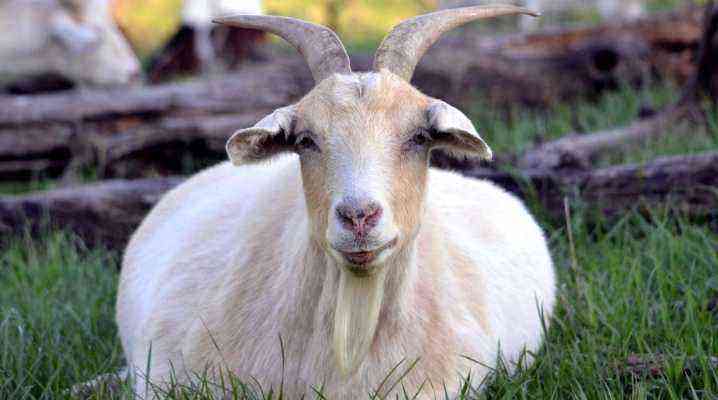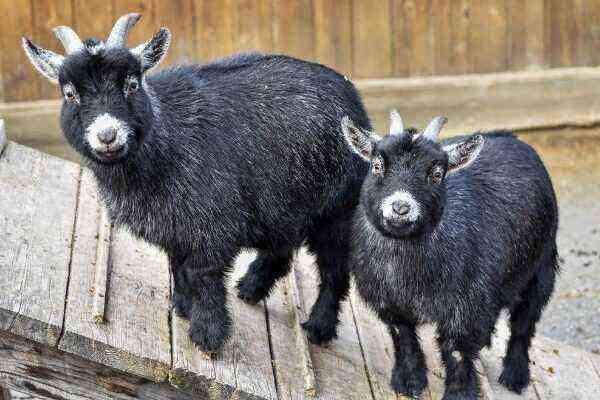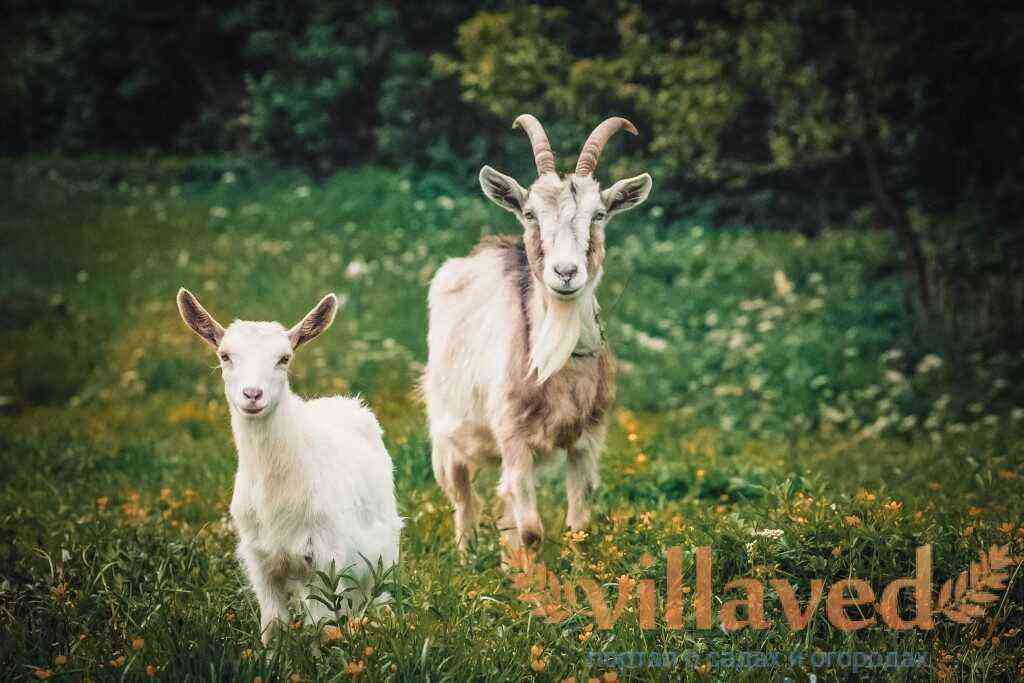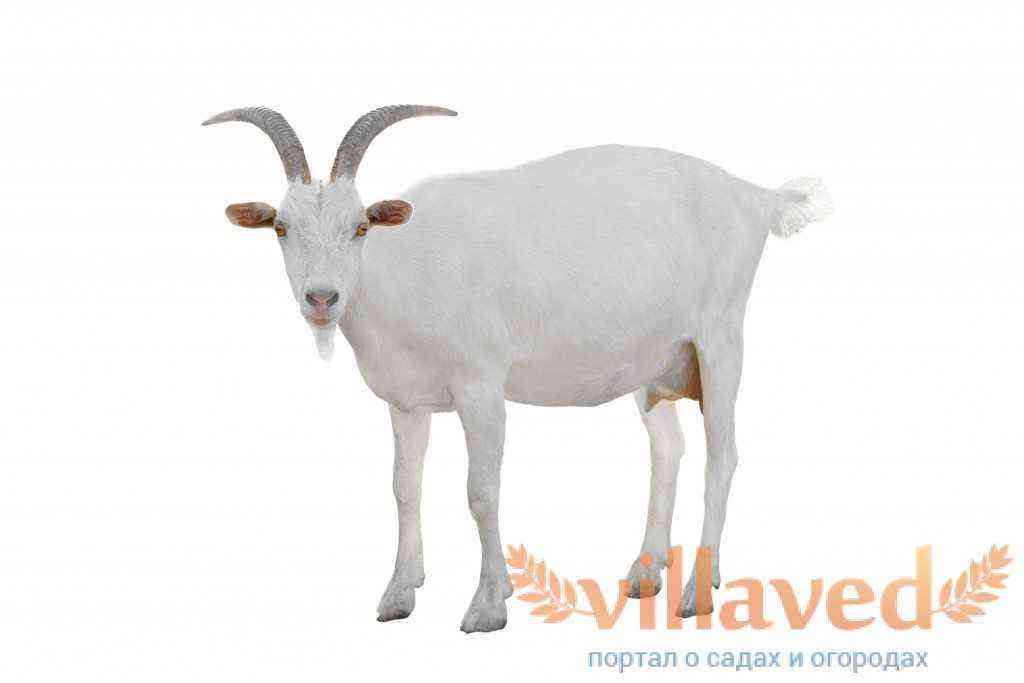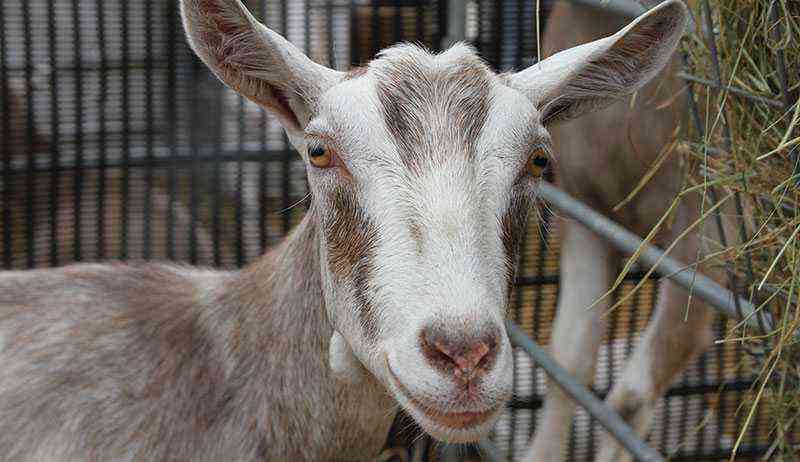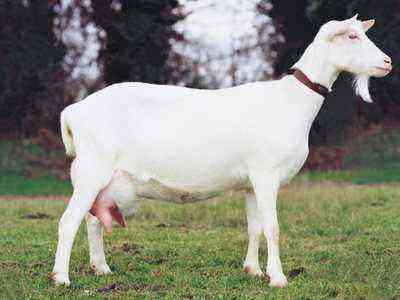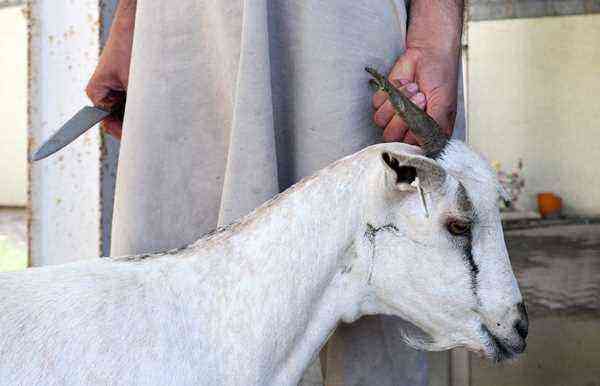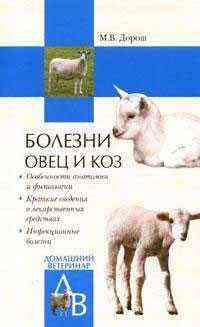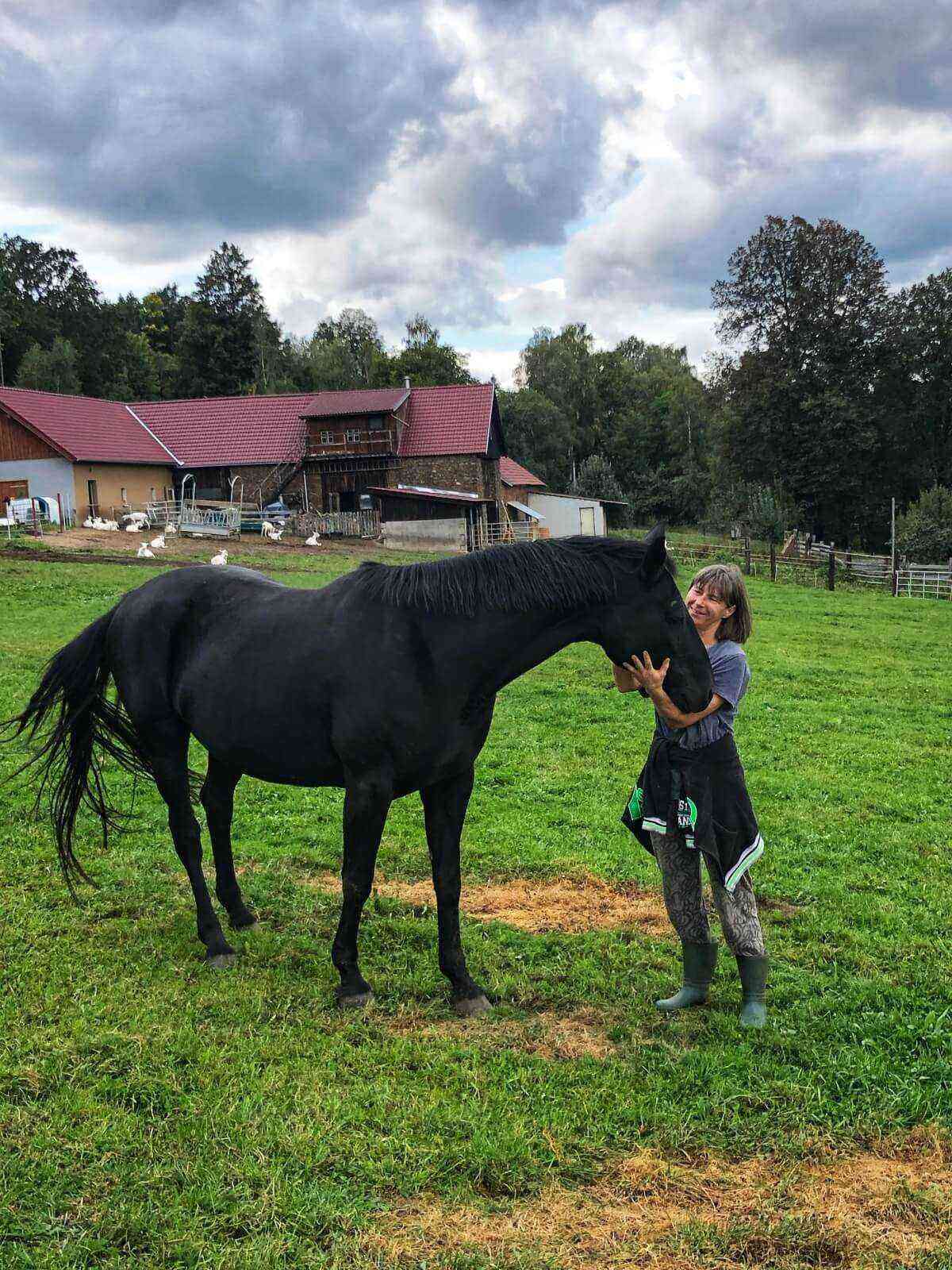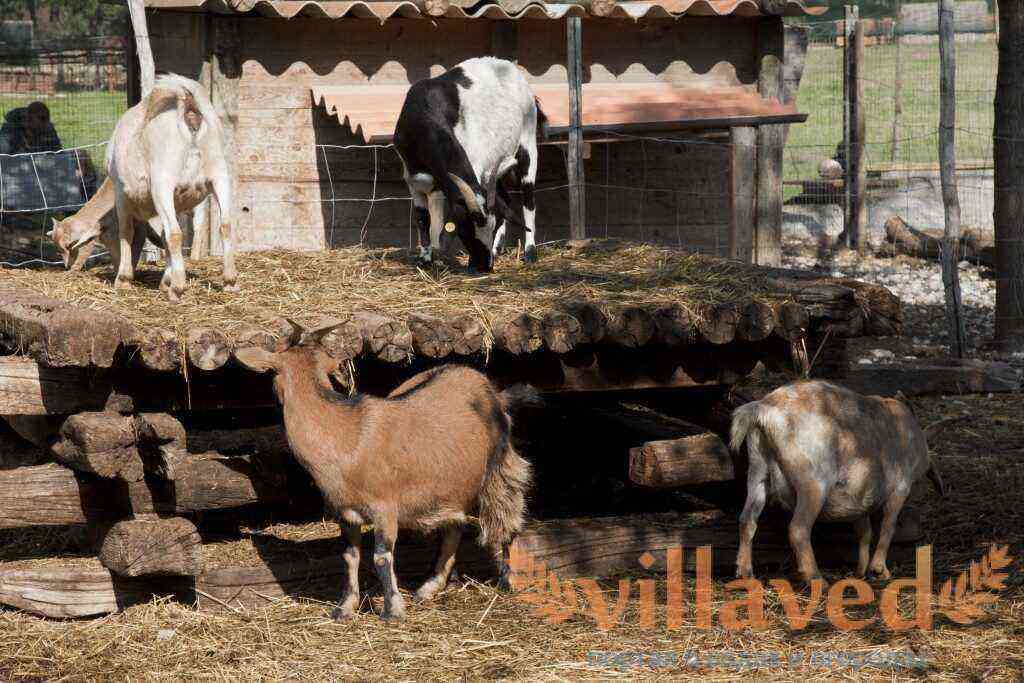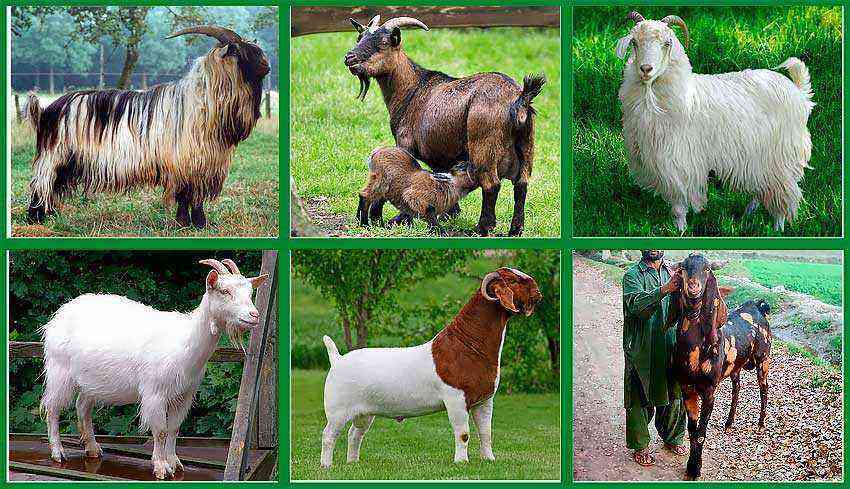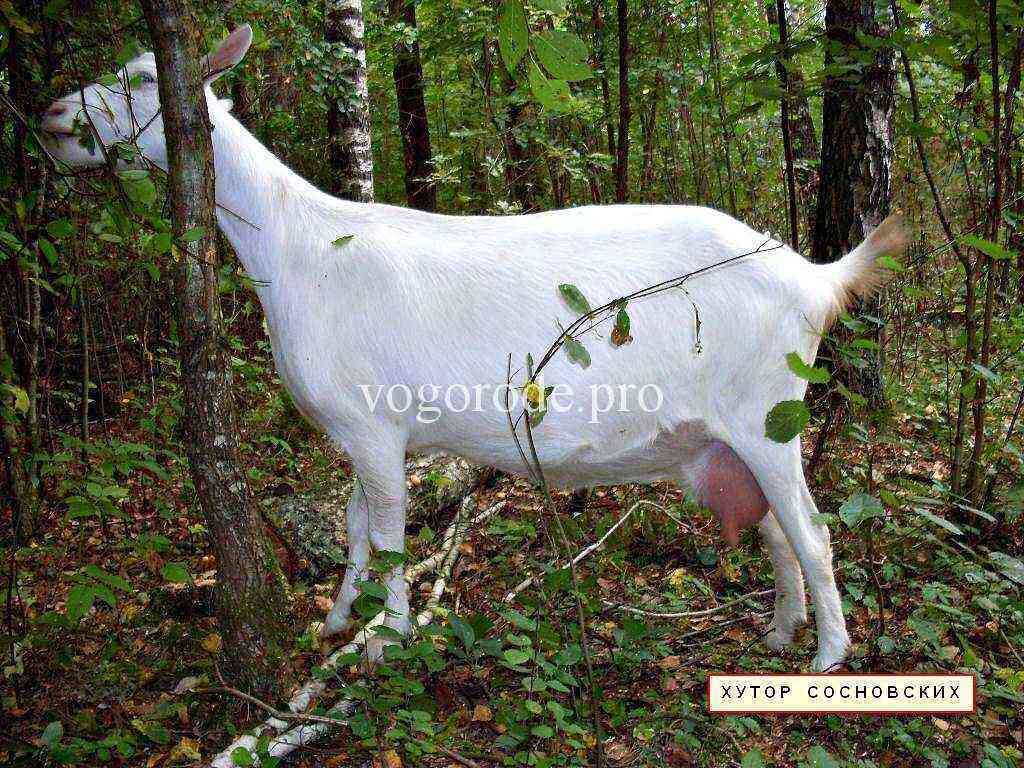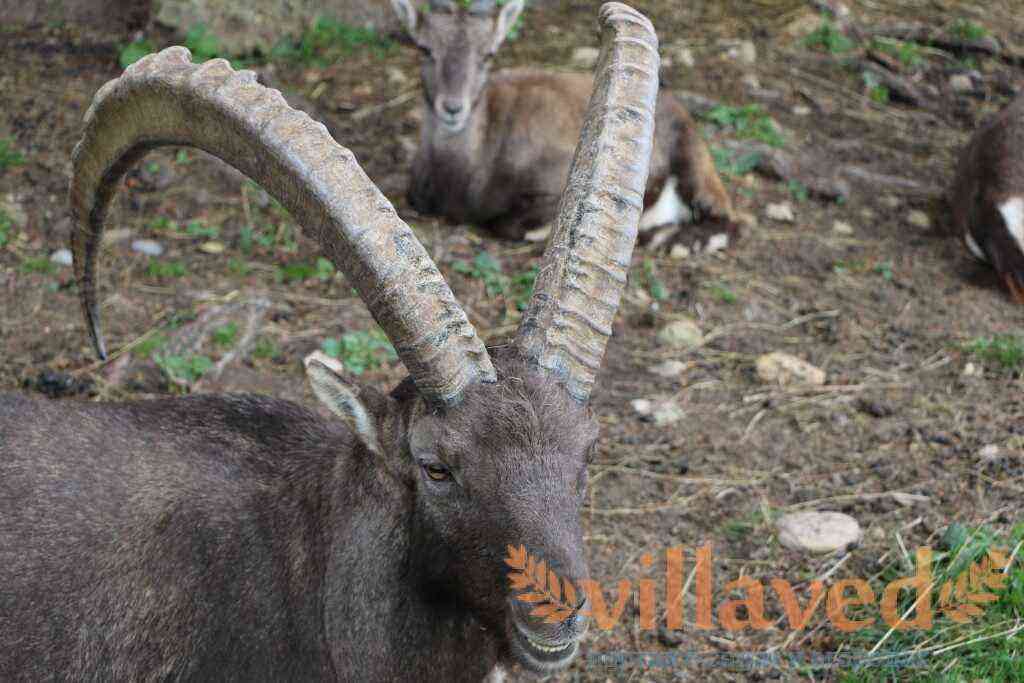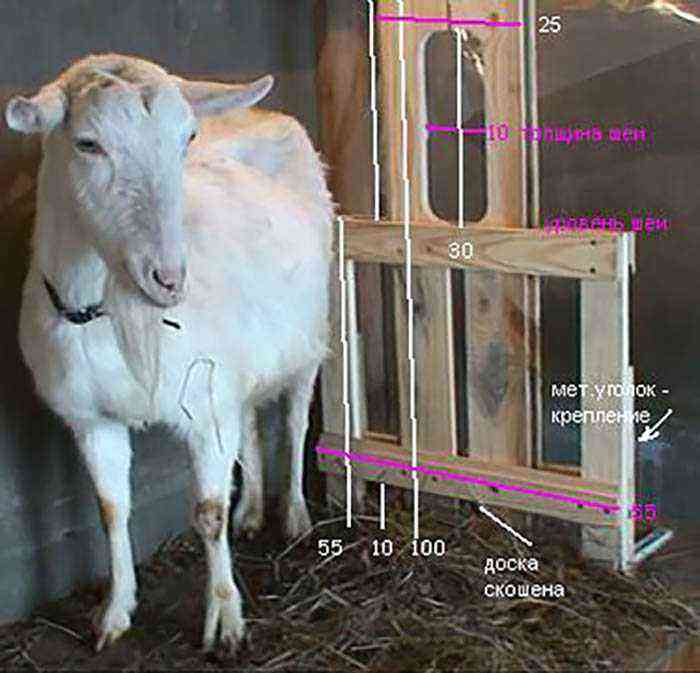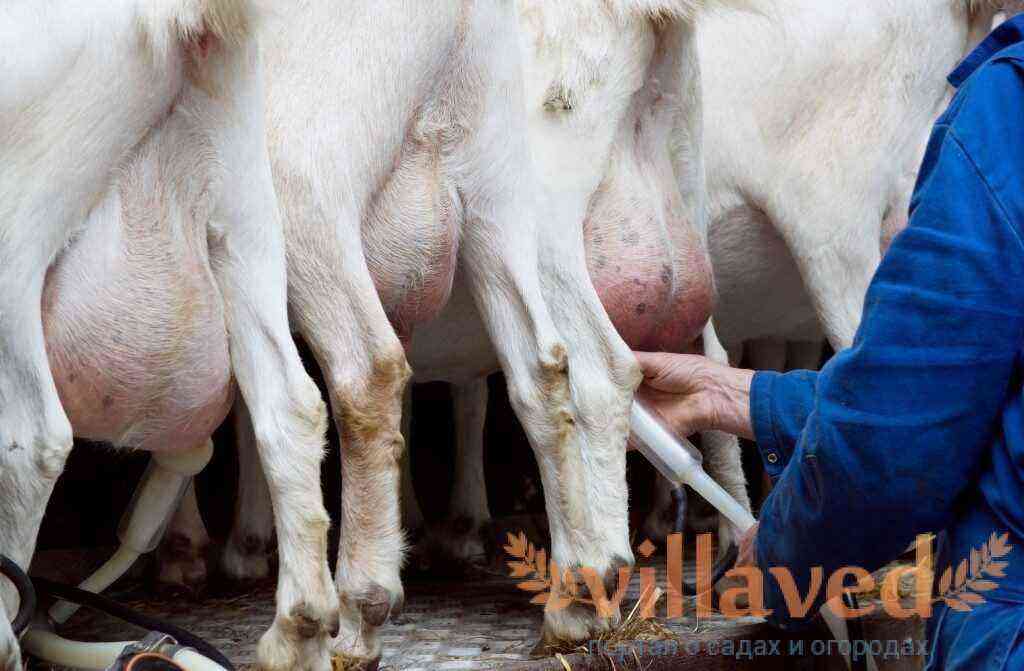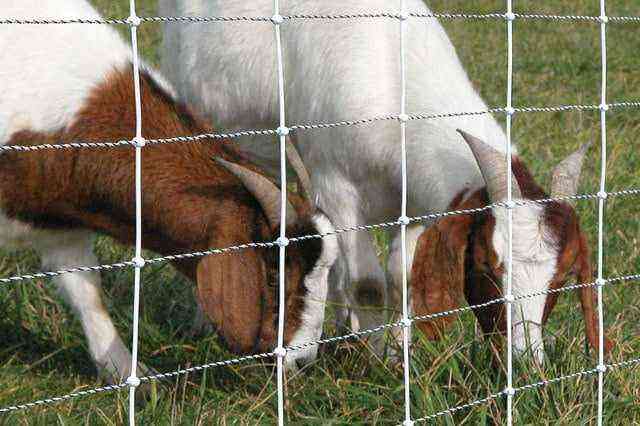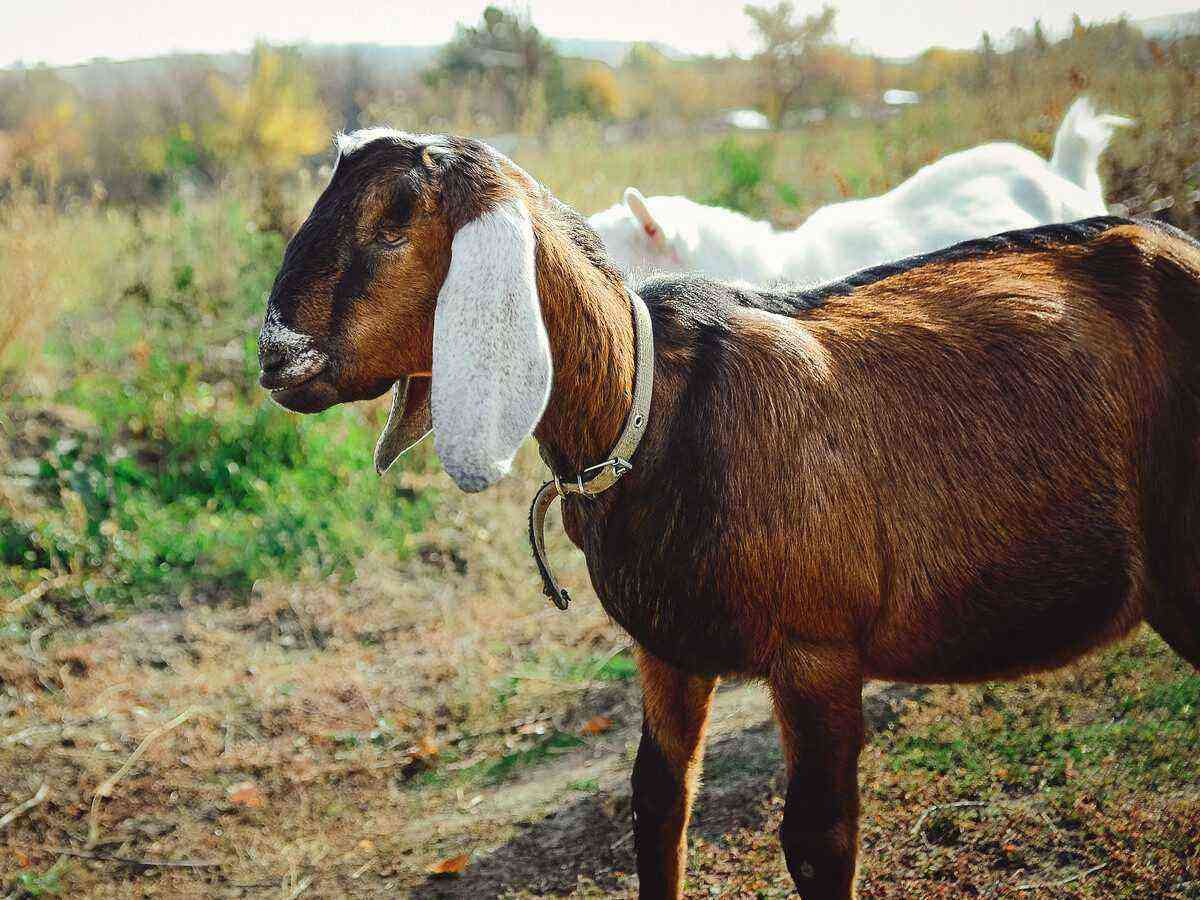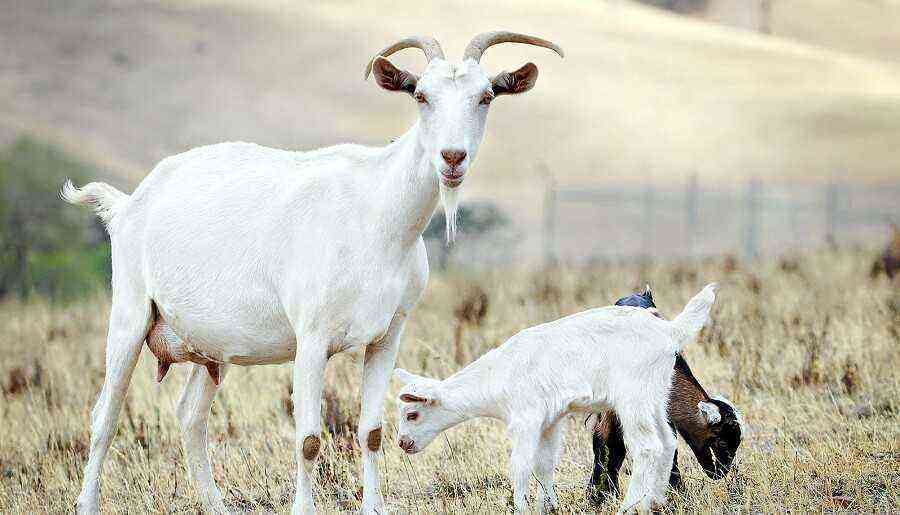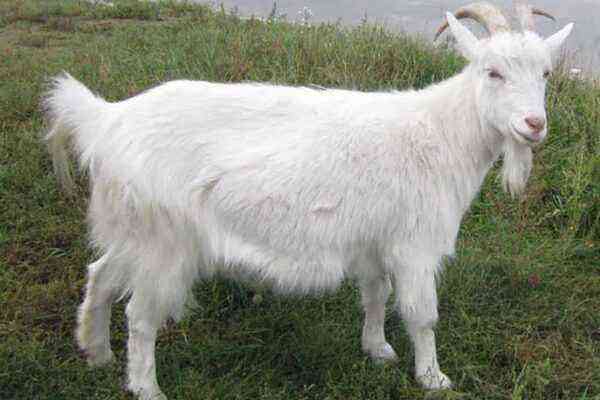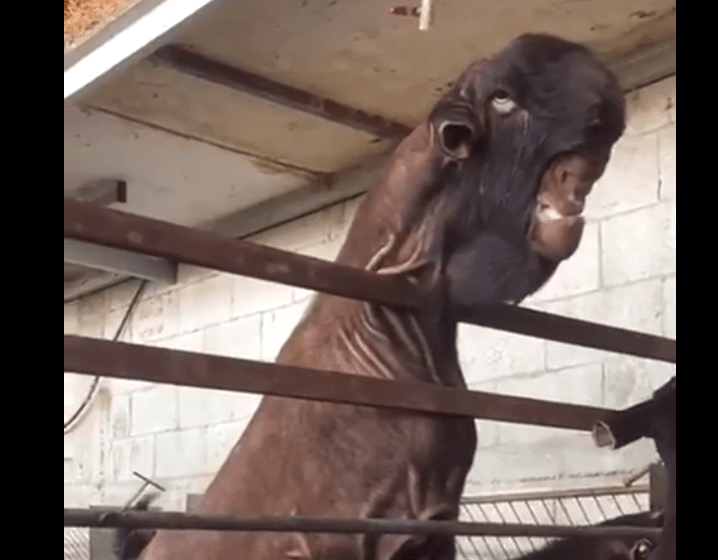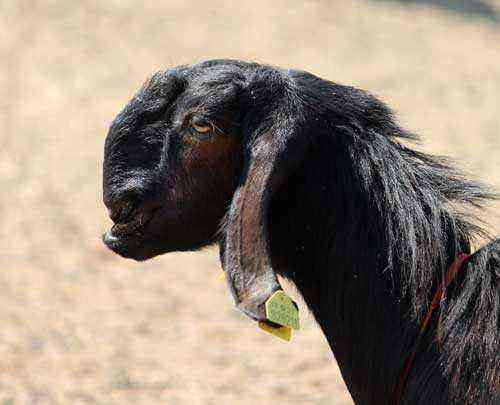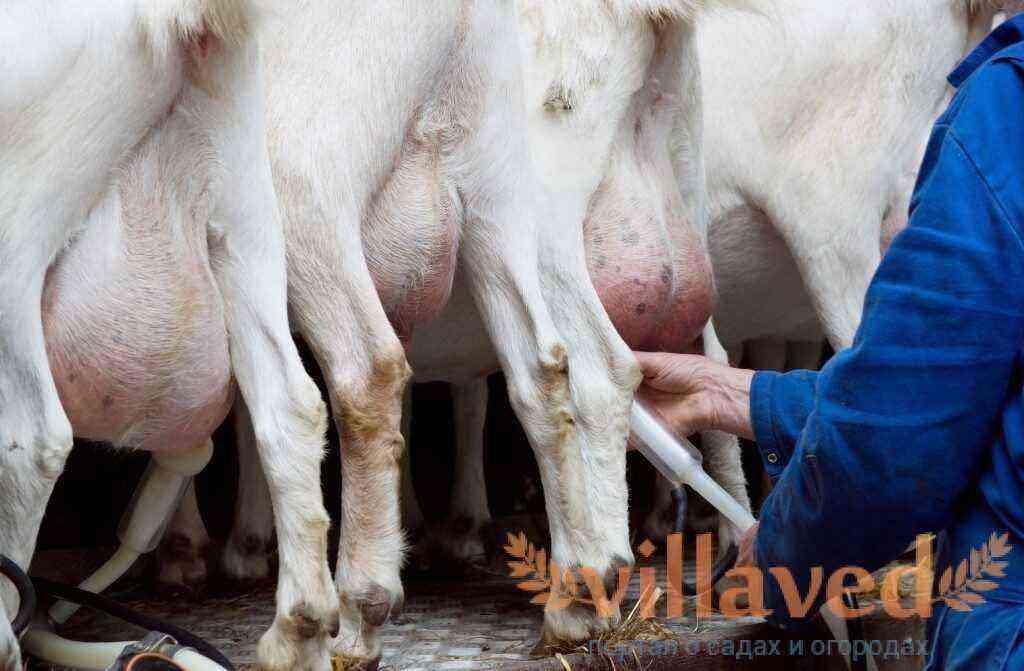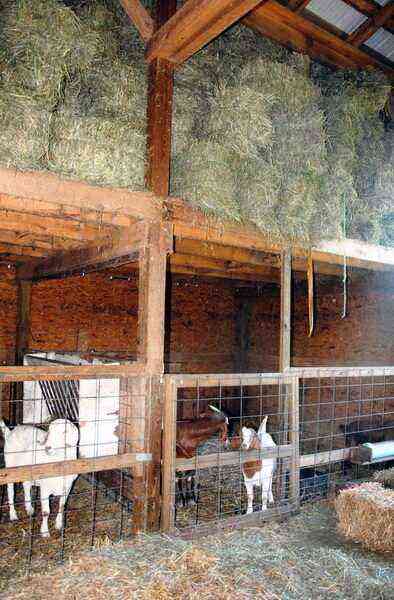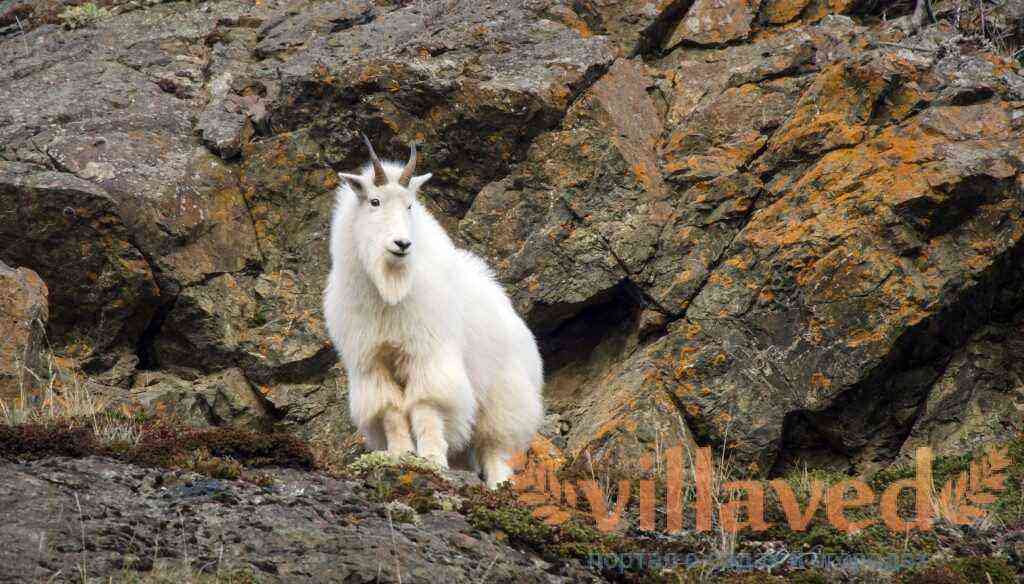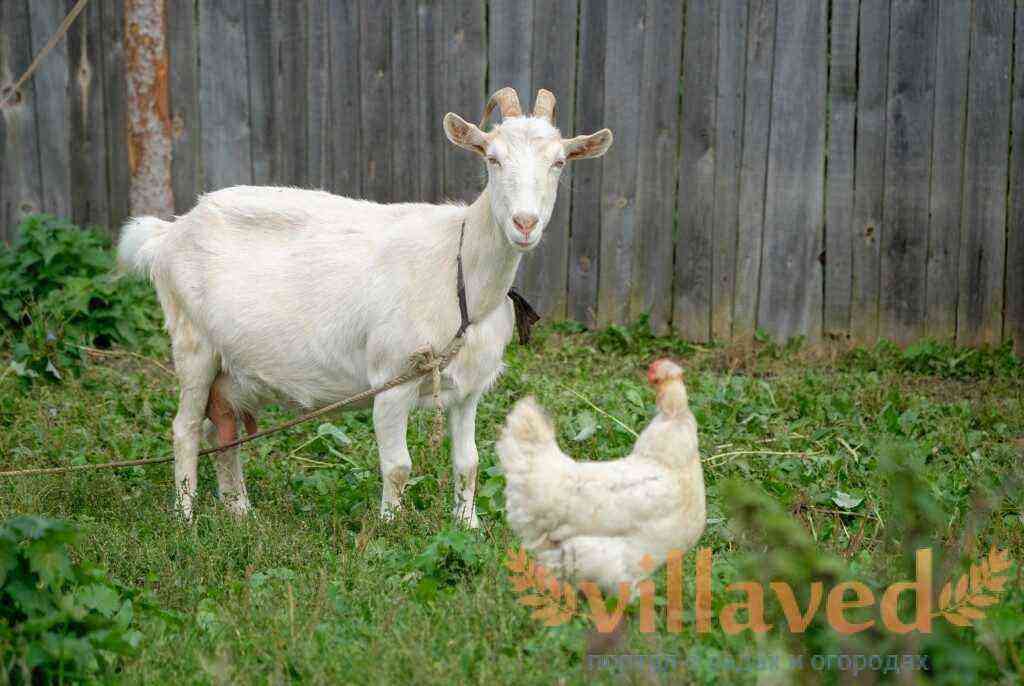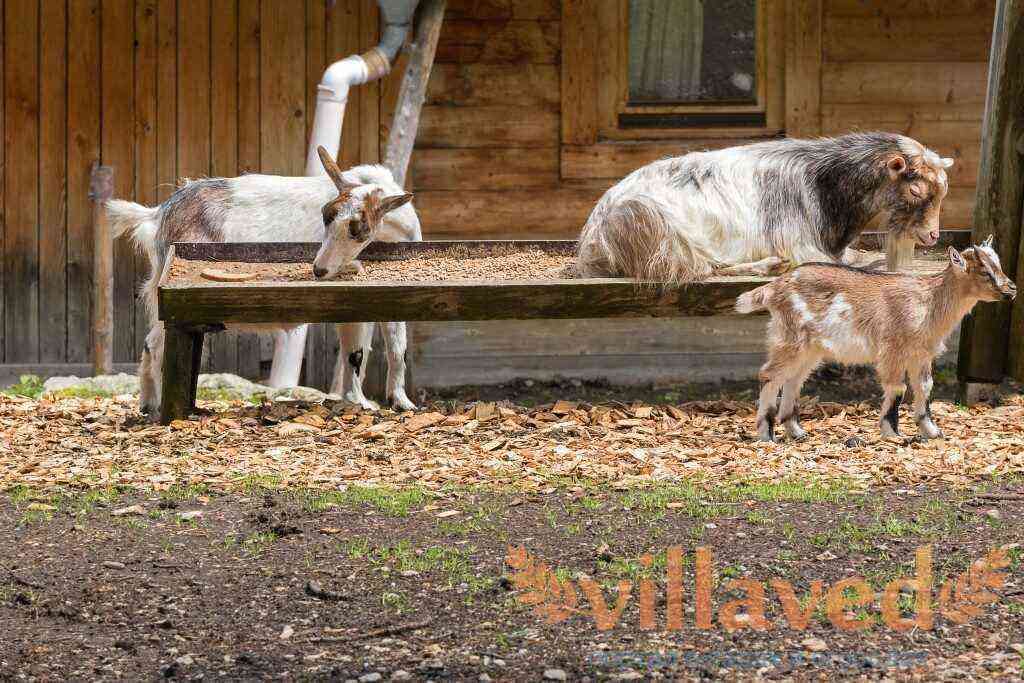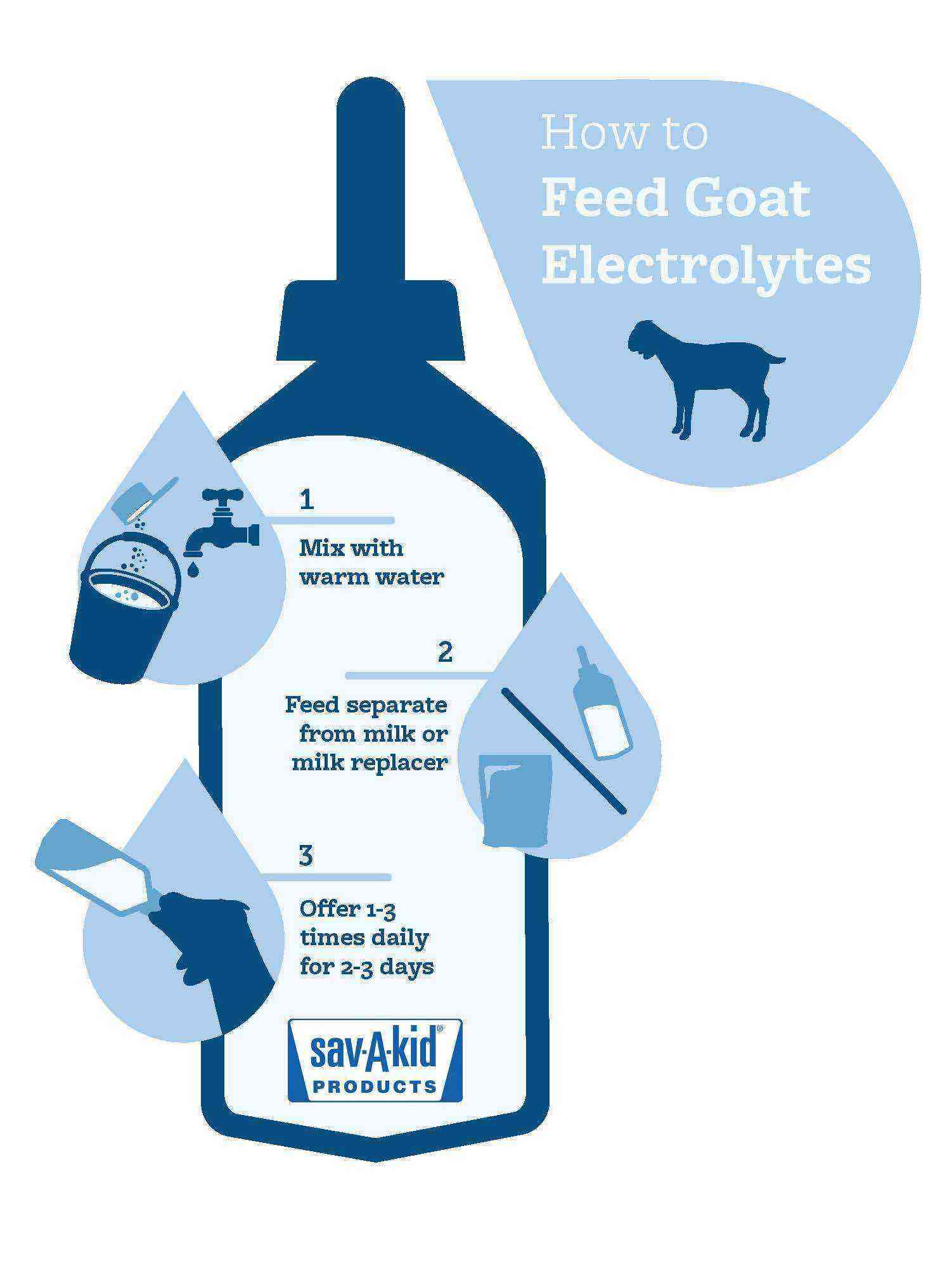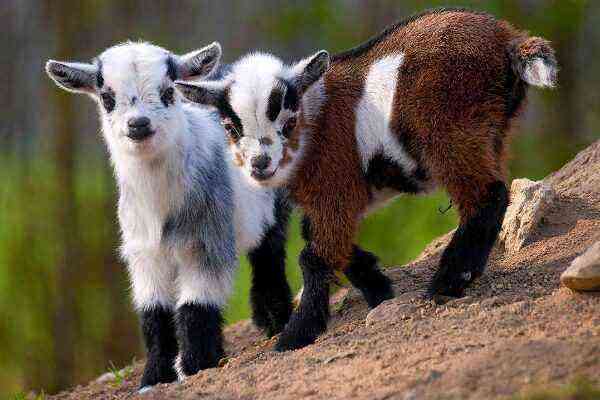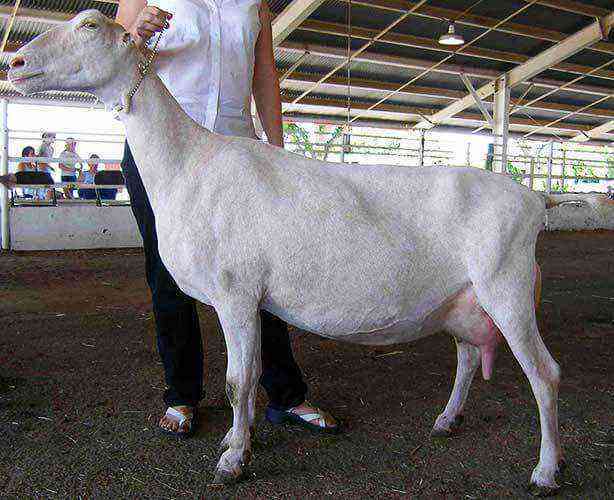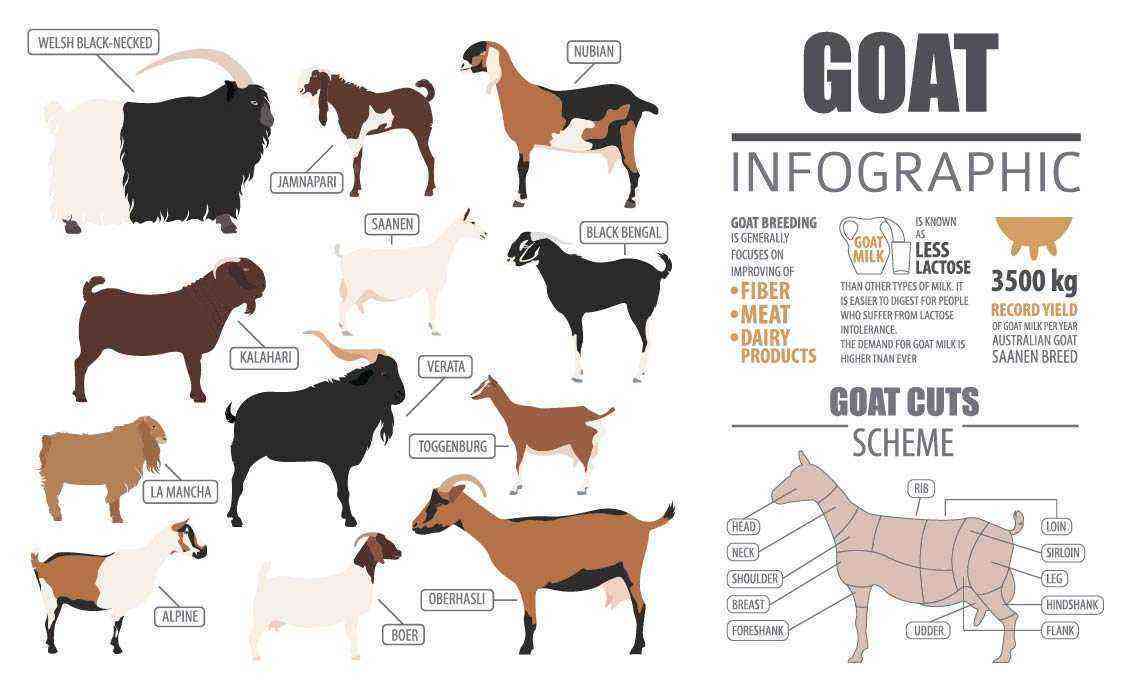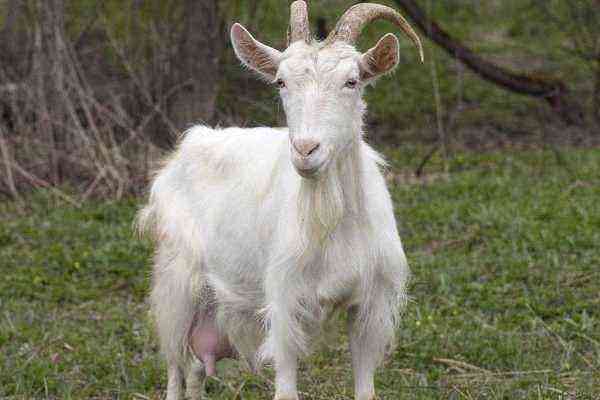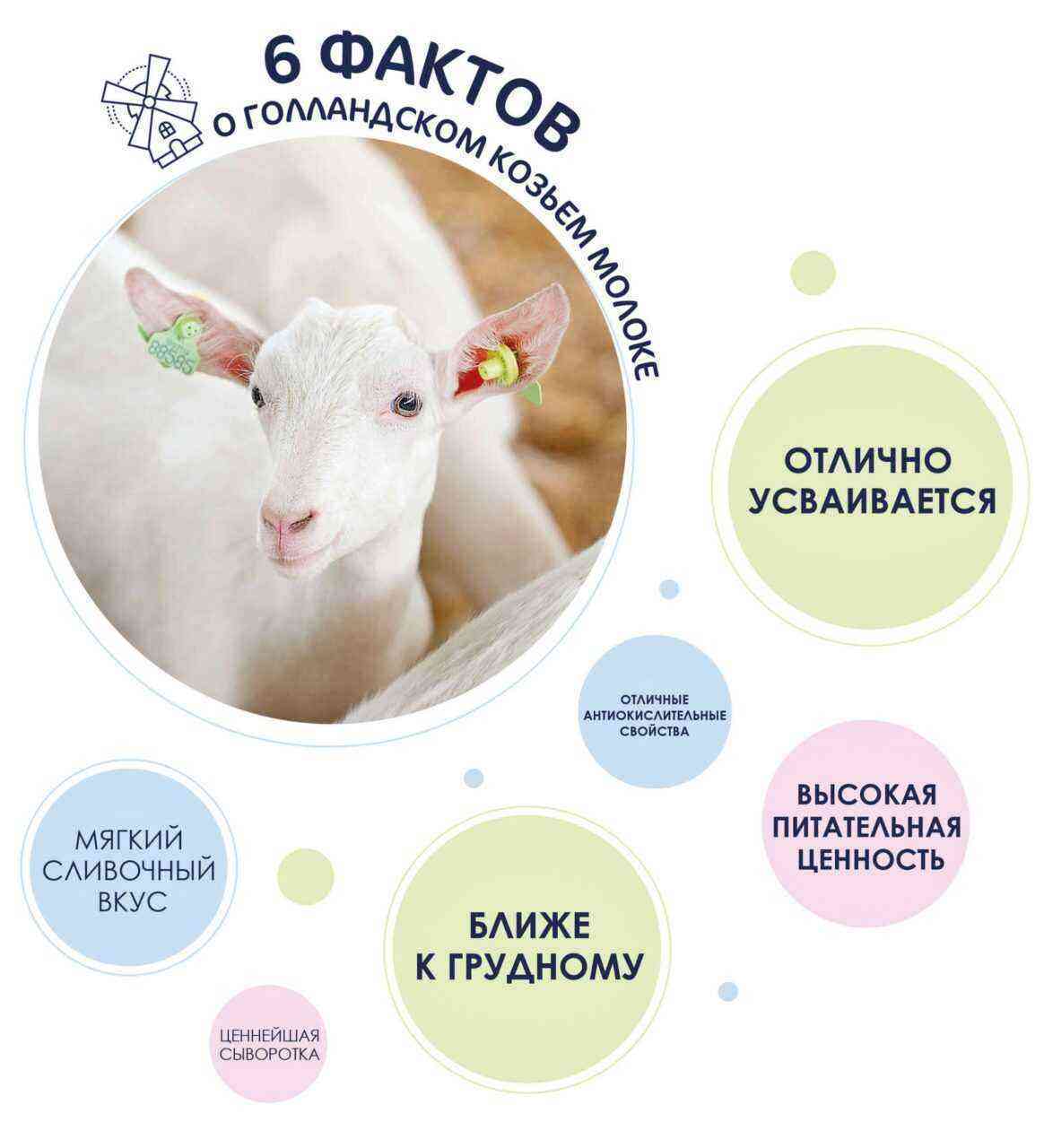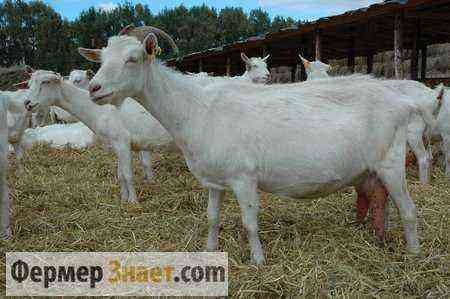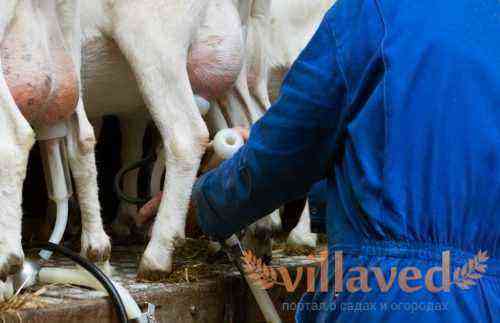Goats are one of the hardiest animals. But, despite this, it is necessary to take responsibility for compiling a winter diet. Not only the appearance and health of the goat, but also its productivity will depend on what your wards eat. In the summer, this problem is solved by itself, and with the advent of cold weather, the farmer should think about what types of feed it is better to feed his goats. You can learn about what you can feed a goat in winter from this article.
In winter, it is not possible to feed goats with fresh grass and leaves, but this does not mean that animals will not receive healthy, vitamin-rich foods. Necessary foodstuffs are prepared in summer and stored until winter. In winter, goats need to be fed three to four times a day. The feeder should always be kept clean. Before serving the next feed, the remnants of the last meal must be removed. Animals must have constant access to clean water. You need to change it with every feeding. The norm of water per day for one goat is from two to four liters. Water should preferably be heated to room temperature. In addition to water, goats can be given whey and herbal infusions, but poured into separate drinking bowls. Horned ones still like to gnaw on chalk and lick the so-called slimes or table salt.
Keeping and feeding goats in winter
The content of the article:
Features of keeping goats in winter
The scheme of the winter diet should look like this: the first half of the day – roughage, the second half – hay, root crops, concentrate. Root crops must be washed thoroughly. Branches, especially birch, ash, aspen, maple and linden, make up a huge part of the food in winter. They contain many useful substances. All food must be of high quality without mold and unpleasant odors.
Goats are unpretentious animals, but they also need special care so that they give a lot of milk and good healthy offspring. Caring for them consists in keeping them in a good room with the necessary equipment, a balanced diet and walking in the fresh air.
Goat house insulation
The room for goats should not be drafty, and the air temperature there should be at least 8 degrees for adult animals and 10 for young animals. Therefore, when building a goat barn, you need to use hollow materials, such as bricks or cinder blocks, but you can not use stones – they are very cold.
Materials that have air inside combine two functions: the carrier and the function of insulation.
You can also use a tree, but in this case there is a possibility of cracks and crevices and in the end you will have to additionally insulate the goat’s rue. If there is an attic, then it can be used as storage for bedding and hay for goats. Hay will be able to warm the room a little, but it is best to insulate the ceiling with foam. The walls of the goat house can be insulated with mineral wool or sawdust. Be sure to insulate and isolate the floor from the ground.
Lighting
There should be light in the goat room. To install windows, choose the south side of the barn. Windows are installed at a height of one and a half meters, so that jumping animals do not inadvertently break the glass and get hurt. Window openings are set in proportion to the floor area of 1:20.
The key to successful winter cultivation is a capital insulated goat house
In the summer, goats have enough natural light. With the advent of autumn, daylight hours become shorter, and animals need additional lighting. To do this, install lighting fixtures. When conducting electricity, several rules must be taken into account: light bulbs are hung high and each is insulated with dense shades; insulate the wires into cable channels and place them in the upper part of the shed; there must be a switch in the room.
Mat
The main thing in caring for goats is the cleanliness of their content. If the room is dirty, the taste and smell of milk will deteriorate. The first thing to start with when caring for animals is bedding. It should be dry and there should always be a lot of it, otherwise the goats themselves will begin to spread themselves, taking hay out of the manger.
The litter is used depending on the floor device: if the floor is concrete, asphalt or brick, then peat will be an excellent litter.
Peat is placed under straw so that it does not stain the animals and does not cause diseases of the udder and hooves; if wooden, then peat cannot be used, but it is better to take straw. One goat of such bedding requires 0,3-0,5 kilograms per day. It is also good to use ordinary leaves for bedding, but their disadvantage is that they get wet quickly and need to be changed often.
Organization of walks in winter
Goats are very active animals and with the advent of cold weather, they should not be constantly kept in a barn. In winter, walking will have a good effect on animals – gradual stabbing will improve and strengthen health, which will have a good effect on the quality of milk. The duration of the walk in winter is two hours. During this time, the animals will have time to run, jump and frolic, which is very good.
Walking area should be cleared of snow
Such walks will contribute to easy lambing for expectant mothers, and hardening for babies. During the walk, the farmer’s task is to monitor the condition of the wards’ hooves: snow and ice should not get inside the hooves. To do this, you need to clear the area of snow in advance.
Feeding rules
During pregnancy, the goat’s body is rebuilt so that the fetus develops safely. Serious changes occur in the second half of the term, this is due to the growth of the fetus. The diet of the expectant mother at the beginning of pregnancy and before the birth itself changes a lot.
For pregnant goats
Proper diet for pregnant animals is very important. Cold water and stale low-calorie foods negatively affect the development of the fetus and can cause premature lambing or even worse miscarriage.
In summer, goats should receive the required amount of such feed:
- Feedstuffs
- Grain mixtures
- green mass
One animal per day should receive at least 0,7 kilograms of grain and 0,8 feed. To diversify the diet, you can give root vegetables, with the exception of beets, it can cause miscarriage. In winter, the green mass is replaced with hay or straw. Branch fodder is also harvested. Green branches are cut and dried. Animals also like coniferous branches containing vitamins and essential oils, which are considered very valuable for pregnant goats.
Particular attention should be paid to feeding pregnant and lactating females.
In the second month of pregnancy, mineral supplements are added to the diet: fodder chalk, crushed eggshells, bone meal. Such supplements are very necessary for goats, since during this period the bones of the skeleton of the fetus begin to form and the need for calcium increases. In a pharmacy, you can purchase an analogue of these components in the form of mineral and vitamin supplements.
In the fourth month of pregnancy, grain and feed are gradually removed from the diet of the expectant mother so that the fetus does not reach large sizes. 21 days before the approximate lambing, the feed is completely removed. If a goat is overweight, a month before giving birth, the feeding rate is reduced, and high-calorie food is completely removed.
During such a period, it is important to protect the goat from drafts and dampness. When walking, pastures should be chosen flat, without steep slopes and hills.
For goats with kids
After lambing, the young mother is given bran diluted to a liquid state, the best hay and chopped vegetables (beets or carrots) in small quantities. Bran is given only to recently lambing goats, as it is very nutritious and well absorbed by the body.
See also: How to build a goat stall
The birth process in animals weakens the digestive system, so concentrates will be very heavy food for them, especially the first three days. After six to eight days, the goats are transferred to a normal diet. During the feeding period, the uterus should receive fresh hay and root crops of about four kilograms per day. These fruits promote active lactation in lactating goats.
How to feed dairy animals
Dairy goats need more food than dry goats. In addition, the diet of such goats depends not only on the amount of milk, but also on the weight of the goat itself.
Animals that give the most milk require close attention when feeding. The taste and quality of milk is enhanced by the use of proteins found in sprouted grains and other concentrated feeds. It is also good to give legumes, silage, root vegetables, bran, salt, cake.
Varieties of feed
All allowed goat feeds are conditionally divided into three groups: dry (coarse), juicy and concentrated. Each type of food has a beneficial effect on the digestive system.
Rough
Roughage can be given not only in winter, its structure helps to improve the metabolism of animals. Therefore, such feed can be used in the summer. Hay and straw can be used as dry food. For drying, grasses of meadows and forests are used. The daily norm of such feed per animal is two to three kilograms. Such food is harvested in mid-July – freshly cut grass is usually stored in sheaves or bunches. Before serving, the grass can be detailed.
The main types of roughage
In addition to hay, brooms are harvested from the branches of birch, aspen, poplar, maple. One goat can eat about five of these brooms per day. Often brooms are harvested in small quantities. Harvesting begins on the fifth of June, when it is warm outside and young shoots have grown. The thickness of the ends of the branches on the cut should not exceed one and a half centimeters. Branches are cut either in the early morning or late in the evening, when the trees accumulate nutrients. The length of the branches should not exceed 60 centimeters.
After cutting, the blanks are decomposed on the ground for a couple of hours to form vitamin D in them and to dry them easily. Withered branches are easier to tie with twine. Finished brooms are dried in the shade in a shed or in the attic, hanging them on nails on the walls or on rows of poles. A month later, brooms can be folded in several layers on the grating.
In autumn, when the weather is still warm outside, fallen leaves of willow, linden, birch, poplar and other trees are harvested. For a couple of days they are dried on both sides. Such leaves also contain a small amount of nutrients, but their main value is micro and macro elements.
Juicy
By name, you can understand that the basis of this species will be the use of different types of living plants.
Juicy feed will help saturate the body of animals with vitamins
This type of food includes:
- Vegetables – a delicacy that all goats like, which they eat along with tops and roots. Carrots, cabbage, beets, potatoes (boiled), Jerusalem artichoke – crushed and given to animals. Vegetables can be given no more than four kilograms per day.
- vegetable tops – you can take any type of tops from potato and cabbage leaves to carrots. But such a delicacy must be mixed with crushed chalk in a ratio of one gram per kilogram, this will reduce the acid content in the feed.
- Fruit – a favorite treat. Pears, apples, peaches, apricots – that’s what they like, you just need to remove the seeds.
- Silage – demanded food due to its useful properties: high calorie content and many vitamins in the composition. Silage is considered a complete substitute for grass. You can give up to four kilograms per day.
- Grass – the most accessible and cheapest food ingredient – animals just need to be taken to a clearing with grass. Goats like any grass.
Such feed can be given to your wards, both in summer and in the cold season.
Concentrated
This type of feed must be present in the diet of goats, as it contains many nutrients. They are rich in proteins, fats, carbohydrates, vitamins and trace elements. Such feeds must be used when feeding in winter, especially in the second half of pregnancy and during lactation. But you need to give it correctly so that there are no problems with the digestive system.
For example, grains such as oats and wheat are given only in crushed form. Corn is generally given in portions, otherwise the appearance of obesity in animals is possible. Compound feed, cake, bran and meal are also included in this category. 12 hours before feeding, they should be poured with boiling water. The concentration for compound feed and bran can be arbitrary, and for meal and cake in the ratio of one part of feed to three parts of water.
These types of food must be combined, creating a complete diet with all the necessary nutrients. Feeding rates are calculated depending on factors such as age, sex, body weight and health status.
You should also consider a few basic rules of nutrition:
- Dairy goats need more protein than dry goats. Also, do not forget about phosphorus and calcium in the composition of the products.
- Large goats need to be given more food than small goats.
- Lactating animals should receive twice as much food as the rest, because the nutrition of dairy goats depends on their diet, which needs up to six liters of milk per day.
- In cold weather, goats need food with a high fat content so that they can warm their bodies on their own. In summer, the diet of females should have more protein food to increase the amount of milk and carbohydrate food to recreate energy on long walks.
On average, about 360-550 kilograms of roughage, 400-600 kilograms of juicy and 30-40 kilograms of concentrated feed fall on one goat per year. The minimum figures are given for young individuals, the maximum for large dairy goats.
Concentrates are the main source of energy
Take into account the appetite of the animal. If the goat does not have enough food given to her, increase it, but do not allow overeating, obesity negatively affects the number of milk yields.
Vitamins and Supplements
For normal development, goats need vitamins. Many vitamins are synthesized in the body of goats, and some come only with food. A healthy body can provide itself with B vitamins (except B12). Kids raised without dry food should be provided with vitamin B12 through supplements or injections.
Goats can synthesize vitamin C on their own. Vitamin D is considered a very important vitamin, especially for young animals. Its deficiency can provoke rickets – a disease in which the bones become soft, deformed and easily broken. Animals can get this vitamin when they are in direct sunlight or from hay that has dried in the sun. If the animals are indoors for a long time, then vitamin D is added to the water.
From September until the goats are put out to pasture in the new year, goats need vitamin supplements containing vitamin A. Its deficiency can reduce appetite, lead to slow development of the skeleton of kids and their slow growth, vision problems, cough, dry skin, birth weak offspring. The best source of vitamin A is green fodder. It is best to use special vitamin and mineral complexes for goats, as they need not only vitamins but also micro and macro elements.
Common feeding mistakes
Sometimes on mini-farms one can observe mono-feeding – the use of only one or two feeds in the diet. Yes, goats are one of the most picky animals and can give milk even on straw, but in such a farm there will be no longevity and high milk yields.
One feed cannot provide the animal with all the necessary elements:
- Hay and other roughage – needed for the normal functioning of the stomach.
- Cereal grains are rich in carbohydrates.
- Legumes are protein.
- Silage and root crops – minerals, vitamins, sugar.
Another equally common mistake is a quick change in diet, especially when switching from summer to winter and vice versa. If your goats graze in the meadows from spring to autumn, and are placed in a stall in winter, then the green fodder is changed to silage or hay. To make the animal eat less green food, give it hay in the morning before grazing. And when changing the diet, stretch this period for ten days, replacing 10% of the old food with new food every day.
Improper preparation and storage of hay can lead to the fact that the goat does not want to eat it in the winter. Such hay should be inspected for mold, musty odors, and fungal infections. You need to examine the animal itself, to determine if there is an appetite. If the animal is happy to eat other feeds, hay must be treated in the same way as straw – yeast, steaming.
Stalling implies reduced activity, so it can lead to obesity. From hay, such an effect is unlikely to be, most likely a search of concentrates. Review the diet, it should correspond to the weight of the animal, fatness, milk yield. If the goat has deposits of fat on the sides, and productivity decreases, you need to reduce the daily dose of grain.
Effective ways to increase milk yield in winter
Each farmer is interested in his animal giving as much milk as possible, since his profit directly depends on the amount of milk.
The most important thing in adding milk is feeding her. It will depend on him how much milk the goat will give and how much she will gain weight. In winter, feeding is especially important, and in order to increase milk yield, you need to give a lot of hay and prepared brooms.
It is good to give vegetables, you can even clean them, only they need to be washed. Many argue that the addition of milk is facilitated by the use of turnips or fodder turnips.
Water is a very important component of the diet. It must be clean and warm. Indispensable in this matter will be cereals that goats eat with pleasure, but before serving it must be crushed. With an increase in milk production, the goat’s body’s need for minerals and vitamin supplements increases. You can also give compound feed, they can replace minerals and vitamins by half, but goats quickly get fat from them. Therefore, they must be given in moderation. You can also put a slime or pressed salt on the animals.
One of the new and effective methods of increasing milk yield is the addition of probiotics to food. Milking itself is considered no less important, namely the frequency, quantity and technology.
Typical diseases in winter
Diseases of goats are divided into non-contagious, infectious, invasive and parasitic. Infection with diseases in goats occurs differently. Strong, well-fed animals get sick less often than weak, poorly developed and kept in poor conditions.
In adult animals
If your animal has become malnourished or refuses to eat at all, moves with difficulty, looks depressed, and body temperature rises, this may indicate that the animal is sick.
The cause of non-communicable diseases can be improper or inadequate feeding or feeding of low-quality products, poor care or injury, poisoning with pesticides or poisonous herbs.
Acute rumen tympania occurs with a sharp change in the feeding regimen of goats, eating feed on an empty stomach, causing fermentation and watering before feeding with succulent feed. As a result, there is a strong gas formation in the rumen with a violation of belching, and the goat’s stomach increases in volume. The animal may die from asphyxia, acute cardiovascular failure or rupture of the scar. As a treatment, they remove gases from the rumen, limit the fermentation of feed and restore belching. To do this, the goat’s tongue is pulled out, a straw tourniquet is placed in the mouth. The abdomen is massaged and doused with cold water. Inside give a solution of creolin or ammonia.
Poisoning can be provoked by contaminated feed, pastures and watering places with chemicals. Failure to follow the rules when treating animals from blood-sucking insects can also cause poisoning. In addition, goats can be poisoned by poisonous plants growing in pastures.
See also: What to do if a goat has a bump
Inflammation of the udder (mastitis) occurs in lactating goats, due to incomplete sucking of milk from the udder by the goats or incomplete milking, as well as from a cold of the animal or damage to the udder. The diseased part of the udder becomes hot and hard to the touch.
Traumatic injuries also appear quite often. If the animal is injured, immediately stop the bleeding, wash the wound with a weak solution of potassium permanganate and lubricate with iodine tincture, bandage if possible. A broken limb must be bandaged by putting a splint of planks on it.
Hoof disease is expressed in the fact that there is a lesion of the interhoof gap, corolla and crumb. These areas swell, then tissue rot begins. Sick goats are kept separately on a large layer of bedding.
Foot and mouth disease is an extremely dangerous disease of livestock. The disease affects the udder, hooves and mouth. Bubbles appear on the affected areas – aphthae, lips swell. Body temperature rises. The illness lasts for a week.
Parasitic diseases are divided into blood parasitic and helminthic. For example, fascioliasis is caused by helminths that live in the bile ducts of the liver. Goats become infected with fasciola larvae while grazing on pastures.
Infection with echinococcosis occurs in the fields, goats swallow with food or water the mature segments of the parasite that lives in the intestines of carnivores. Moniesiosis is caused by tapeworms that develop in the small intestine. Goats in the fields become infected through ticks, which are carriers. Young goats are the most vulnerable.
In young animals
The absence or lack of vitamins, minerals, phosphorus and calcium, which are part of the bones and tissues, especially in young individuals, lead to metabolic disorders and later to diseases.
Rickets is a disease of the young. The cause of the disease is considered to be the feeding of lactating and sucrose queens with feeds with a very low content of vitamins and minerals. As a result, young animals are born weak and easily succumbed to rickets and other diseases.
Osteomalacia is a softening of the bones that affects both young kids and adults. The reason may be unsatisfactory feeding, especially the lack of calcium. The uterus, kept in poor conditions, is also susceptible to the disease.
Bones in sick animals are depleted of salts and become brittle, flexible and soft, which leads to curvature and even fractures.
Avitaminosis: this disease usually occurs in late winter and spring. There is a decrease in fertility, kids are born underdeveloped, a decrease in milk yield, retention of the placenta. In addition, night blindness, lacrimation, dryness of the cornea, pneumonia, and digestive disorders may appear.
Disease Prevention
To prevent the occurrence of certain diseases in goats that can cause damage, and even harm to the person himself, it is necessary to observe preventive measures.
The main activities include the following:
- If there have been cases of helminthic invasion in your area, then periodically you need to treat with antihelminthic drugs to prevent the disease. This procedure is carried out twice a year: in the spring, before the goats go out for grazing, and in the fall, before the animals are transferred to the stall mode.
- Give horned only clean, heated water. Do not allow watering in ponds with stagnant water.
- When grazing goats on pastures, you need to change the place once a week. You can return to the old places after one and a half to two months.
- In a room where goats are kept, the floor and bedding should be regularly inspected. Hooves and limbs of animals should be examined every two weeks. If during the examination any abnormalities or lameness were found, such a goat should be isolated in a separate stall until the reasons for the deviations are clarified.
- For the prevention of diseases of the hooves and limbs, it is necessary to carry out baths with a solution of copper sulfate twice a month. It is necessary to draw enough water into the container so that all the limbs of the goat are simultaneously immersed in water. A good option would be to put a container at the entrance to the barn, then all the animals will undergo the procedure.
- Make sure the room is well ventilated, dry and warm. This is very important for the animals themselves.
- Goats constantly need vitamins, which they cannot always get from food. Therefore, they must be additionally provided with special briquettes, which include ground chalk, table salt and iron sulfate.
- Prevention of mastitis and other diseases of the udder is considered regular inspection. It is necessary to monitor the condition of this organ, to prevent any mechanical damage during milking. When mastitis occurs in individuals from the herd, they are transferred to a separate stall for further treatment.
- There are diseases that are transmitted from mother to newborn goats. The source of the disease is the placenta and the membrane of the fetus. Often, animals that have had an abortion are at risk of contracting the disease. In this case, the corpse of the dead animal must be burned or buried, and the goat site should be treated with antiseptics and the bedding changed.
- For feeding, use only high-quality food and clean water.
- Goat wombs need special care. They need to be given only clean water, the best food, additional vitamins and minerals, and outdoor walks in winter.
If you follow these recommendations, your herd will always be healthy and protected from various diseases.
Recommendations from experienced farmers
Before you buy goats, you need to decide what breed you want. Then consider where you will keep your smaller friends. The room should be bright and spacious with built-in ventilation and equipped with additional lighting. It should also be insulated. Feed must be prepared in advance. Food should be varied and nutritious.
Animal care must be correct and timely so that there is no spread of infection. Due to improper care or monotonous nutrition, the taste of milk can change in goats. Take care of your animals, and then you will have a healthy livestock and high milk yields almost until lambing.
